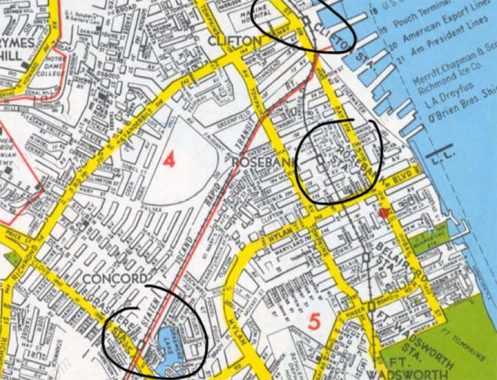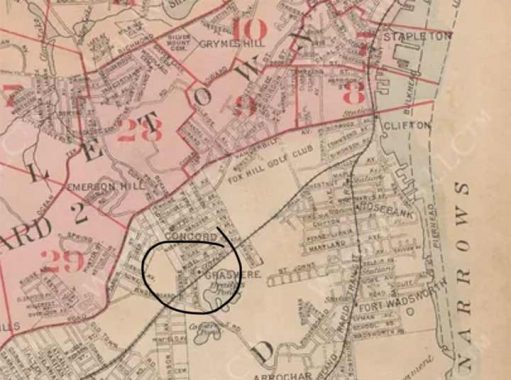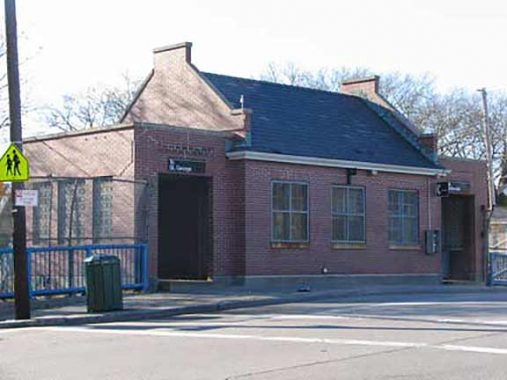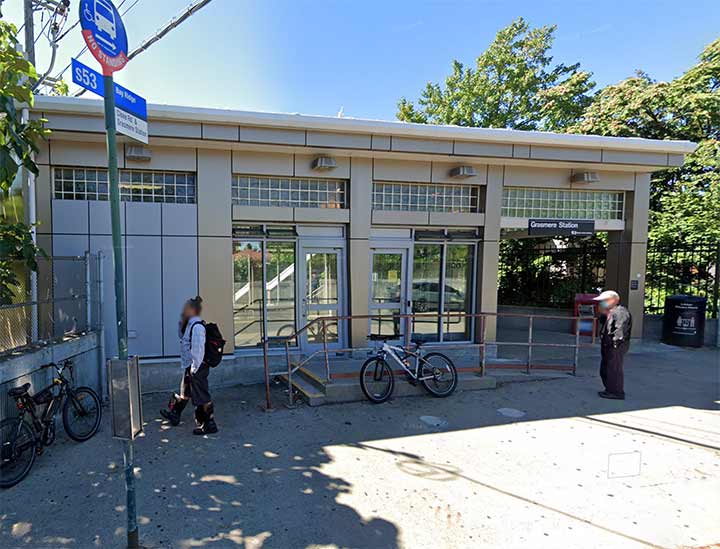
CAN it be over a decade since I have walked around in Grasmere, Staten Island, the next neighborhood west of Rosebank (where I have been multiple times, including a week ago, when I wandered its back streets along the old Staten Island Railway South Beach line, looking for remains). It’s a shame because I have always admired Grasmere’s suburban atmosphere and numerous private, hidden ponds.
In fact on that previous 2013 walk linked above I noted that Grasmere’s 1930s brick stationhouse on Clove Road had been demolished and a new one was going up in his place. I had completely forgotten about that and was only reminded of it when I was fooling around on Google Street View the other day and there was the new station! It’s been open now for eleven years and has never been graced by my presence. Looks like a little walk in Grasmere will be in the offing sometime in 2025.
Grasmere figured peripherally in my career at the now-defunct Center For the Media Arts, where I picked up computer programs like Quark XPress in 1990-1992 and led to my website and sort-of bestselling books. Anyhow, the school was located at 7th Avenue and West 26th Street and, especially on weekends, I’d look for a change of pace to get home to Bay Ridge, which is where I lived before moving to Flushing.
So: I’d take the #1 train from 28th Street to South Ferry, take the ferry to St. George, then the SIR to Grasmere, switch to the S-53 bus, which crossed the Verrazano Bridge to Bay Ridge and I was home. Took me about 1 and 1.2 hours, about a half hour more than it would if I just took the subway home. More expensive too, these were the days before free bus-subway transfers.
In the 1800s, a Britisher, Sir Roderick Cameron, built a mansion in the area near the present intersection of W. Fingerboard Road and Steuben Street. The mansion’s gatehouse is supposedly still there. Cameron is remembered by Cameron Lake and nearby Roderick and Cameron Avenues. Grasmere was named for a British town in the Lake Country, where Sir Roderick was from.

Grasmere station is notable for being the lengthiest distance by mileage from the previous station, Clifton. It’s been surmised that an intermediate station was never built because the former South Beach branch had a stop in Rosebank, on St. Mary’s Avenue. That’s a possibility but it seems that there should have been a station amid the warren of narrow streets on the west side of Rosebank; but it was never constructed. Map: Hagstrom, 1949

Here’s an older map showing the station. This may answer the question, since in 1917, the area was occupied by the Fox Hills Golf Club, with plenty of nothin’. Note that Clove Road had not yet been built through the area and Fingerboard Road was the main conduit from Rosebank.

To date, Grasmere is the only rebuilt station and the rest of the stationhouses along the Tottenville Branch look like the brick station at Grant City, which dates to the grade crossing elimination program in the 1930s.
Stations of the Staten Island Railway
Check out the ForgottenBook, take a look at the gift shop. As always, “comment…as you see fit.” I earn a small payment when you click on any ad on the site.
4/3/25


3 comments
It does indeed have the feel of a small town in upstate.
I used to pass the Grasmere Station daily in the mid-60’s when I was commuting to Wagner College from Brooklyn. Catching the bus at 95th Street, over the Verrazzano Bridge, meandering through Grasmere, and finally getting off on Clove Road at the foot of Grymes Hill. It took about 1½ hours.
Nice overview of Grasmere. My first job in media was at the now defunct Staten Island Register newspaper a few doors down from the Grasmere SIRT station. I would normally take the S53’s predecessor route (S7) to and from Grasmere via Port Richmond and transfer to another bus to get home. Quite the long ride for a teenager, especially at night. BTW, Grant City and some of the immediate SIR stations nearby weren’t grade separated until the 1960s. They do look very much like stations on the line built during the 1930s with the peaked roofs and brown brick, but they are relatively newer copies of older stations.